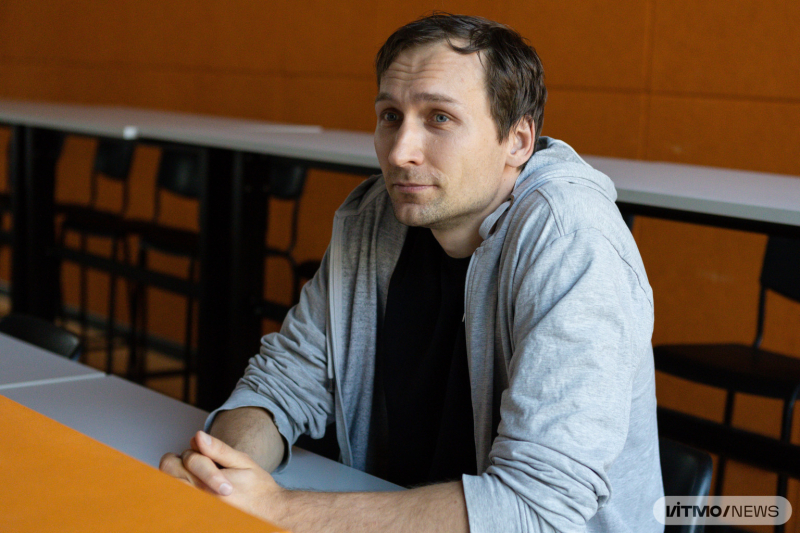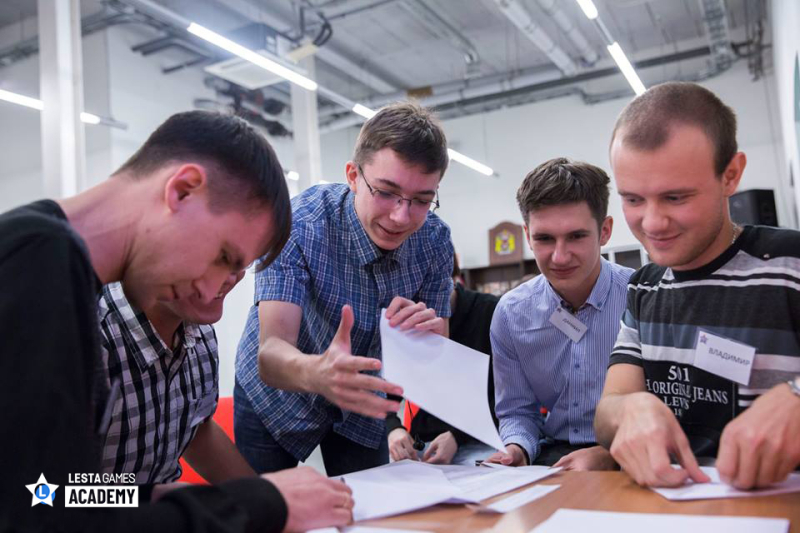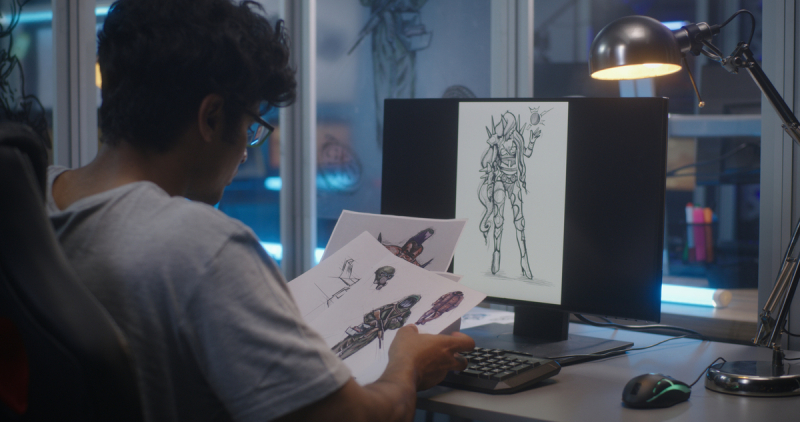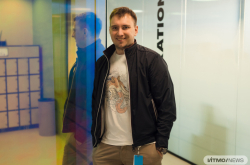From a company manager to a junior game designer
I was far better at mathematics than Russian or English, much like my brothers. So it was apparent ever since I was a kid that I should pursue a technology career in the future – hence, I studied at a math school. Nonetheless, in our final year, while some of my classmates had been hectically prepping for universities, I still couldn’t make up my mind.
I enjoyed mathematics and knew that I should opt for a field I’m familiar with but, then again, I didn’t want to limit myself to studying mathematics only. In the end, I turned to my elder brother who studied mathematics intensively, as well. He won several competitions and studied at ITMO’s Information Technologies and Programming Faculty headed by Prof. Vladimir Parfenov.
My brother, who managed to study well and also work on the side, inspired me to get into ITMO, too. Focusing on programming only didn’t work for me, so I enrolled into the Information Technologies and Programming Faculty. The reasons being that, first of all, I already knew about ITMO and then the program I chose seemed exciting: it had no boring tech courses, like technical drawing, and ethical hacking sounded dope.
I kept on playing video games during both my school and university years and I was pretty good at it so that I even made it to the top 100 Dota players in my second year of university. One of the players noticed me and offered me a job – and that’s how I became a 1C programmer in Moscow without even interviewing for the position. That was a great first-time job!
After that, I started working at a bank where I first installed POS systems and performed ATM services and then moved to technical support. After five years, I was promoted to a senior specialist and stayed for another three and a half years. Then, I led a development team at British American Tobacco for one and a half years and quit the job to become a junior gamedev designer at Lesta Games in St. Petersburg.

Danila Lychkin. Photo by Dmitry Grigoryev / ITMO.NEWS
Two questions to ask yourself before resigning
I learned about Lesta Games from my wife who had just got a job as a 3D artist there. I did my research and learned more about the company and its products, the game World of Warships in particular. It was at that moment that I thought it might be cool to work in gamedev. It wasn’t easy for me to make a career change when I was at university but once I was out, I took the risk. As I already knew a bit about gamedev and had some skills, I managed to get into Lesta Games.
Did I feel sad about leaving a high-paying job for a brand-new start? No! Surely, I prepared myself for this change and I settled on what I want in life and what I am willing to sacrifice in the very beginning. These are the two key questions to ask yourself before a career switch, with the latter being the most difficult for many, as I see it.
Once you have your answers, you will see the picture more clearly. Let’s say you want a Ferrari. But you know that in order to get your dream car, you will need to work for 14 hours a day, for five years, giving your best and mastering time and money, while at the same time risking losing everything. As you put it this way, you start to question your desire. That’s why it’s important to weigh the risks in advance.
When I decided to change my career, I could either leave it at that and search for new challenges at my old company or sacrifice something, including money, to get what I genuinely wanted. I think that what made me make a move is the corporate environment at Lesta Games: collaboration and mutual support among employees and opportunities to do what I love, creating products for millions of people around the world. And, last but definitely not least, I played video games religiously and enjoyed modifying them and Lesta Games was a place where I could get paid for my hobby. It was a dream come true and has been so for seven years now. I’m still grateful that back in 2016, I made that move.
Read also:
Study to Play: ITMO, VK and MIREA University Launch New Game Design Course

Danila Lychkin. Photo by Dmitry Grigoryev / ITMO.NEWS
Helping others and moving up the career ladder
I was a junior for six months before getting promoted to senior game designer. Jokingly, the major difference between juniors and seniors is that while the first adds something to make a game better, the latter achieves the same by removing things.
In three years, I was offered a manager position but I turned it down because I thought it meant an end to making games. But in the end, I changed my mind for two reasons.
The first being that my leader moved on to another project and the second – my teaching job at Lesta Games Academy. My students had six months to make a game and present their products. But what happened is that one of the teams had four members left, instead of the initial nine, and they had to figure out something in the remaining two and a half months. I offered to help them. I managed the team and, lo and behold, our project was ranked second among nine teams.
It made me think that “if I could help students with no prior experience to build a pretty good game in two months, then why couldn't I do the same but with professionals?” I took a chance – and in just a couple of years I became a gamedev manager, which wouldn't have happened had it not been for Lesta Games Academy.
I’m now responsible for the creative vision of the game World of Warships. I manage developers and game designers and monitor game features, their functions, designs, and implementation. That goes for designs of new ships, map modes, and NPC interactions. Apart from that, I’m also in charge of training and recruitment. As a leader, I strive to communicate the company’s working principles and our philosophy to team members, as well as showcase their career prospects.

Students at Lesta Games Academy. Credit: Lesta Games Academy
How ships have been making my life fun since 2016
Making games is a large, complex project with numerous pitfalls. And that’s what makes it exciting and burnout-proof, even if you’ve been working on World of Warships for seven years now. For starters, game designers have to have their minds fixed on how to make games better and more gripping for players, without going wild with features.
Once, we introduced an airship escort mode into the game. It may seem simple from the outside but to make it happen, developers had to figure out how to implement an easy-to-understand feature that wouldn't conflict with other features at different levels but still provide novel game experiences.
While creating ships could give a feel of churning out, it’s, in fact, more complicated than that. To design a ship, one team of developers needs to focus on the specifics of 3D designs, whereas others – to balance the mechanics of the ship so it runs smoothly in the game. It's not a big deal when you have 10 ships, but when there are more than 600, it’s far more challenging to balance them all yet incorporate novel characteristics and mechanics.
Creating new content and gameplay options to make your audience engaged is essential. To do so, we analyze the industry and our competitors and decide what we can offer. Though not all of our features are big hits, they do well in the medium and long term.
For example, we once wanted to come up with something fun for April Fool’s Day. We went into reminiscing about our previous themed online events. There was this time when we turned seas into starry skies and cruisers and other warships – into spacecraft. One other time, we replaced ships with toy boats and let our players have battles in a hot tub. The latter was our favorite – so we went on to transform the idea and launched an updated jacuzzi mode, in which players could pick one of the rubber dickies instead of traditional ships. Our older audience received the game well and engaged in bubbly duck battles with pleasure.
Read also:
Creating a Dream Game: Advice from a Game Designer with 17-Year Industry Record
How to get into gamedev
You can be a game designer without being a gamer, albeit the field feels less challenging for those with gaming experience and a passion for games. Game designers need to think systematically, define what’s good and bad for a game, and generate new solutions. It also won’t hurt to have some experience with game engines, like Unity or Unreal Engine, and basic programming skills so that you could, for instance, understand AI behavior patterns. As for soft skills, specialists should be able to communicate their ideas and interact with their colleagues because if you're a poor communicator, your idea, even if it’s a good one, won’t go far.
So, before getting started in gamedev, you need to assess your skills and competencies. You can do that by taking part in game jams or trying your hand at game mods first.

Credit: EvgeniyShkolenko / photogenica.ru





